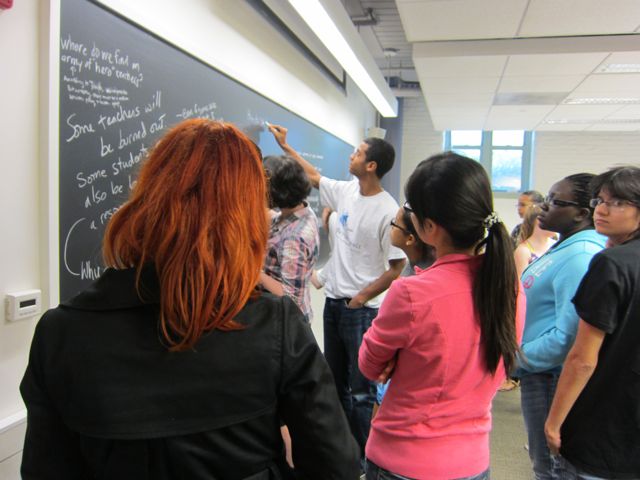Serendip is an independent site partnering with faculty at multiple colleges and universities around the world. Happy exploring!

The Packing Problem, Hunger in America, and Sesame Street's new food insecure Muppet.
I just finished reading The Packing Problem proposal and I really hope that the book actually gets released, because it was a very engaging read, which I think is a hard thing to do when talking economics. As I was taking a break to eat with my family, a story about Sesame Street on the local news caught my attention. It seems that Sesame Street will be introducing a new character, who is food insecure, during a special that will air this Sunday. This story caught my ear because it highlighted the fact that there are 17 million hungry children in the US. That figure was staggering to me and I wondered why, if so many children here are hungry, why there aren't late night commercials pleading for their care. One of the things that I often think about, especially in the context of this class, is the fact that we share a common internalized myth about life in this country, that kind of dictates that issues like domestic hunger are not directly addressed very often. When I returned to The Packing Problem, I wondered how living with food scarcity for the sum total of one's life would affect how that person opperated as an adult. I think that it would affect how they approach most everything, since gaining money is not always a cure for a scarcity mentality. I wonder if this idea may be feeding the common conception that the poor in America are in the position they are in because they are ineffective managers of money.

Connections made during today's discussion
Today while we were discussing Traub's idea that "in the inner city, social capital barely exists", I was able to make a connection between the reading and what I have learned thus far in my Urban Sociology class, but I wasn't really sure how to fit it into in class discussion, so I'll put it here.
What we didn't talk about is that the very nature of cities limits the social capital (as defined by Traub) between its residents. Louis Wirth, who wrote Urbanism as a Way of Life describes the physical structure and layout of a city and how this affects people. According to Wirth, a city can be defined as a large, heterogenous, high-density dwelling. He continues to assert that because there are so many people in cities, primary ties are replaced by secondary ties, and those moving about through the streets are more isolated and lonely because they are less likely to know everyone. This is the idea of the "metropolitan man" and although it's been almost 75 years since Wirth's work was published, we can still see our modern metroman in the city today.
What I gave here is a very general summary of some of Wirth's points, but you can read the whole essay here: http://www.sociology.osu.edu/classes/soc367/payne/Wirth_1938_AJS.pdf

Our first set of web events...
...are now accessible from this page. A number of you had tagged them to appear here, in this forum, but I thought they were sorta clogging things up/slowing down the conversation, so I re-tagged them to appear over there. Please feel free to go read and comment on one another's explorations--there's lots of interesting stuff going on over there!
Animal behavior & gender/sexuality norms
The video “Nature: What Females Want…and What Males Will Do” featured clichéd, even asinine commentary about animals’ reproductive behavior. The DVD showed heterosexual animal interactions punctuated with quotes from biologists and the narrator such as “Males will do anything they can do copulate with a female – we know that!” In a look a male geladas, whose ability to withstand sub-0 nighttime temperatures is demonstrated by the deep red of their chest patches, were described as “Pretty tough!” Female fireflies that mocked another species’ light patterns in order to eat the males were described as “true femme fatales.” In reference to jumping spiders, a biologist explained, “Females are looking for complex things; they want more and more, so males have evolved these dances.” Red-sided garter snakes that were forcibly inseminated would in a day or so “have another chance at love.” This constant commentary, while meant to be entertaining, was not only distracting but often times offensive because of the way it demonstrated stereotypes about gender and sexuality.














